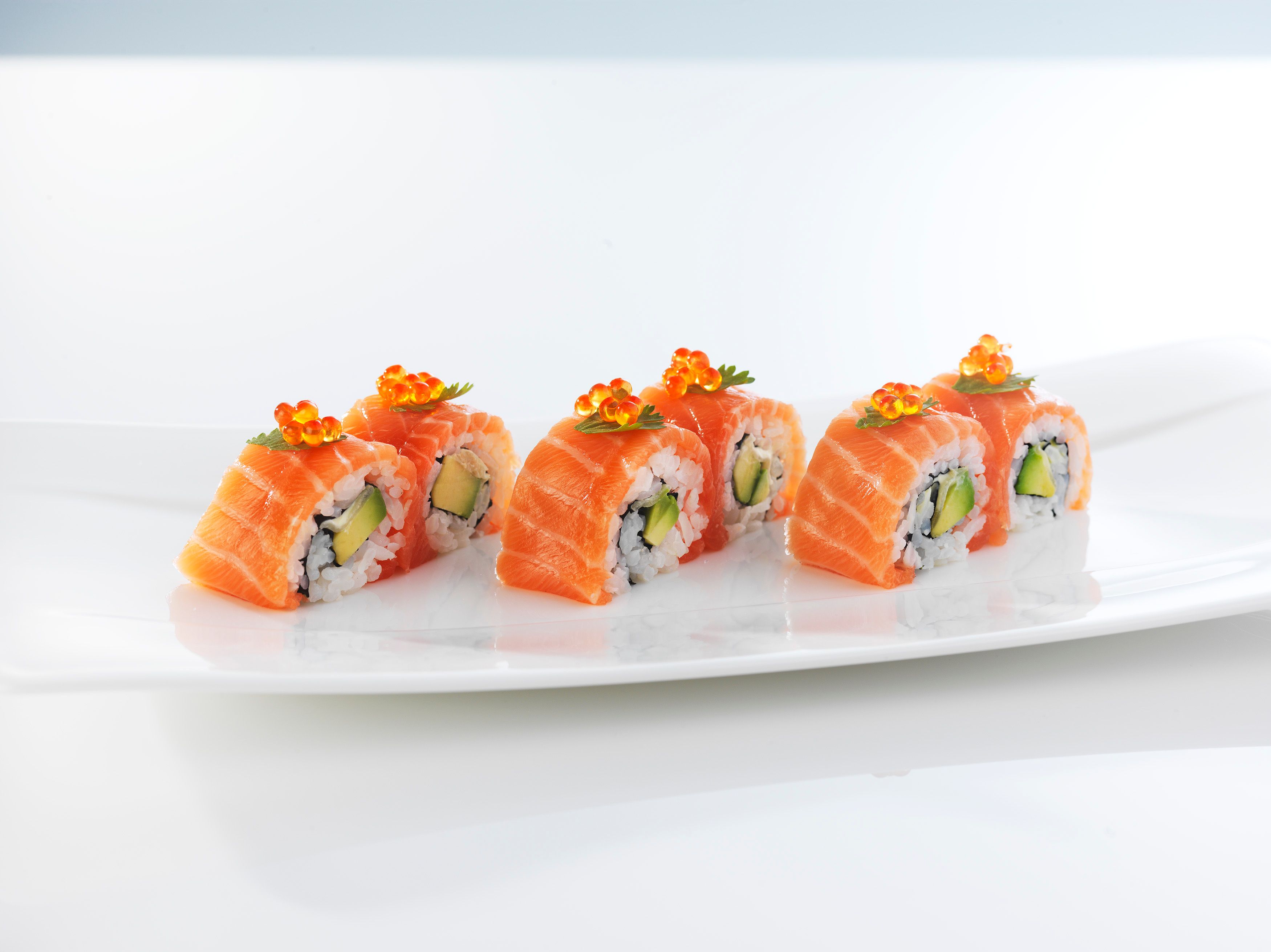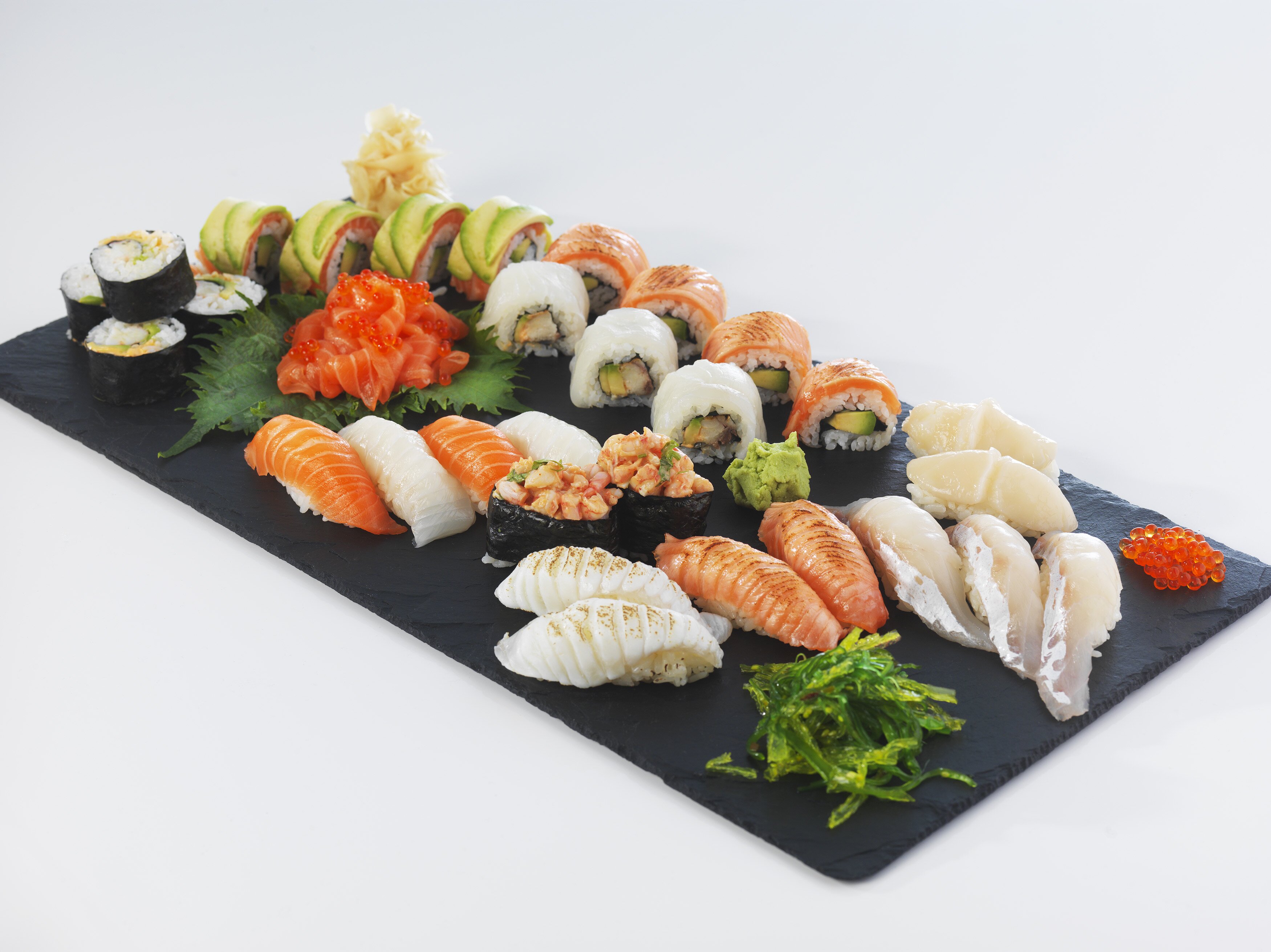Celebrating World Sushi Day on the 18th June would not be possible without a nod to the world’s most popular fish and sushi topping – Norwegian salmon.
Salmon’s vibrant pink is immediately recognisable in Japanese restaurants, on sushi conveyor belts and in supermarket pre-prepared boxes around the world. With versatility, a delicate flavour and a universal appeal, salmon has become not only the world’s most popular fish but also the top choice for sushi and sashimi as well.
“World sushi day on the 18th June is perhaps a bit of a gimmick, but it is an opportunity to celebrate and spread the story about how Norwegian salmon changed the world of sushi. And the day is also handy if you ever needed an excuse to eat sushi,” says Guro Jahre Lund, Marketing category manager for salmon and trout at the Norwegian Seafood Council.
Norwegian salmon is the world’s most popular fish
According to a huge global survey from the Norwegian Seafood Council (NSC), which examines the seafood habits of more than 20,000 consumers – the largest of its kind for seafood – across 20 key markets each year, salmon is the top choice for consumers overall both for sushi and other dishes.
From South Korea, where salmon now accounts for half of the sashimi sold – taking the top spot from traditionally popular flatfish – to Germany where research shows that people who often eat sushi also eat salmon more often, or France, where even a preference for ‘local’ hasn’t dented salmon’s crown, this survey shows us that not only is salmon the go-to fish of choice but that it is also synonymous with sushi.
In fact, salmon in the preferred sushi topping in 17 out of 20 markets studied, with 64 percent of consumers overall citing salmon as their top choice when it comes to sushi. (2020)
Japanese, but a Norwegian invention
While consumers around the world might think of salmon sushi, sashimi, nigiri or a California roll when they reach for a Japanese take-out menu, eating raw salmon as sushi isn’t actually the centuries-old Japanese staple we might think it is. In fact, the Norwegians invented this dish in the 1980s.
The fact that we all reach for that salmon selection box today is down the results of Project Japan, which saw an ambitious group of Norwegians – out to sell salmon – head off to Japan to convince traditionalists that salmon should have a place in the 500-year-old tradition that is sushi.
Fast forward to today and Norwegian salmon has allowed sushi to take over the world. At the same time, Japanese sushi has helped make Norwegian salmon the world’s most popular fish.

The natural home of salmon
The rise of salmon to global fish superstar is down to much more than the popularity of sushi or even its versatility and universal appeal – though it is a fish that even fish-deniers will eat.
Norway has been a seafood exporter for more than 1,000 years, but without successful salmon farming, it couldn’t have become the powerhouse it is today, accounting for more than half of the global Atlantic salmon market and exporting salmon to more than 100 countries around the world.
All that in little over 50 years. The world’s first successfully farmed salmon was set out into a pen in a Norwegian fjord outside Trondheim in 1970, by brothers Ove and Sivert Grøntvedt. That success expanded and has allowed Norway not only to deliver salmon to your dinner table but also to cement Norwegian as a brand in the consumer mind.
Not only is Norwegian the origin of choice for consumers, but consumer awareness and a preference for Norwegian salmon over other countries continues to grow. In 2014, the NSC’s research found that just over a third (36 percent) of consumers said they preferred salmon from Norway: today that figure stands at 44 percent.
So why Norwegian? People choose Norwegian salmon for different reasons – it is healthy, full of good fats and is a quality product. But Norway is also the natural home for salmon – even when farmed. With miles of rugged coastlines and deep fjords, Norway’s clear, cold seas all make for an image in the consumer mind of what it means to be a salmon nation.
Innovation and sustainability
Norway pioneered salmon farming but it didn’t stop there. Over the years it has invested heavily in making sure its precious marine resources stay sustainable for future generations – through hard work and dedicated research.
The ‘Norwegian model’ of seafood resource management is about close collaboration between research, government, and the industry and through a dedication to transparency, Norway has been able to take a leadership position when it comes to knowledge, technology and sustainable management of both wild fisheries and aquaculture. Today, Norway exports expertise as well as seafood.
Norway’s work on sustainability is resonating with consumers who are increasingly focused on climate change and global resource management. Younger consumers in particular, who have grown up with salmon, want to know where their fish comes from and want to know that what they’re eating isn’t damaging the planet.
Norway takes its responsibility to the seas seriously – and that commitment shows. For four years in a row, the Coller FAIRR index of the world’s most sustainable protein producers has ranked Norwegian aquaculture companies as best in class. Of the seven companies ranked as ‘low risk’ for various parameters linked to sustainability, three are Norwegian aquaculture companies.
Norway is the largest producer of the world’s favourite fish – and the world’s favourite sushi topping. The Norwegian salmon industry knows that to keep its place at the top it must continue to research, to increase transparency and to invest in innovation so that it can continue to deliver sustainable salmon to the equivalent of more than 14 million meals of Norwegian salmon eaten around the world every single day.
Read more about the history of salmon sushi on fromnorway.com here.




